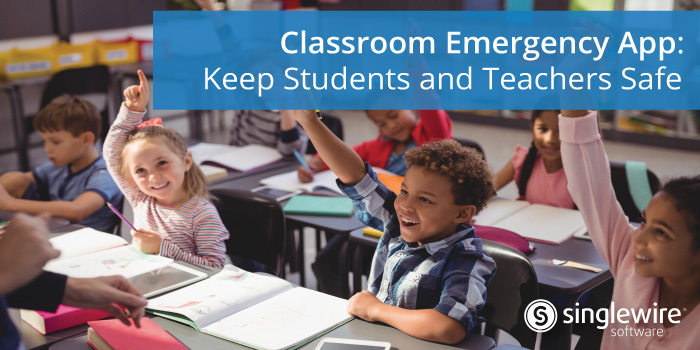A Growing Concern for Teacher Safety
In schools and districts across the country, the unfortunate reality is that violent incidents are on the rise, making students and teachers increasingly vulnerable to potential threats. According to a nationwide study conducted in the United States, 80 percent of teachers have reported being involved in or witnessing a violent incident at their school. Another study found that 43.7 percent of teachers reported experiencing at least one verbal threat, physical assault, and/or property damage. These alarming trends require immediate attention and the implementation of advanced and innovative security measures to mitigate issues. A classroom emergency app is one solution schools are turning to to help enhance safety and provide immediate assistance when threats arise. This blog will explore the various characteristics of this tool, shedding light on its capabilities, benefits, and its role in not only mitigating risks but also empowering educators to respond effectively to emergencies.
What is a Classroom Emergency App?
A classroom emergency app typically is available in two forms:
- Mobile app: Installed directly on a teacher’s phone, a mobile app can be easily accessed to request assistance should an issue arise in a classroom. It also offers flexibility as teachers can access it outside the classroom should they notice an issue in the hallway, cafeteria, or out on a playground. Mobile apps can often provide precise location information so safety teams that receive the request know exactly where to direct assistance.
- Desktop app: Installed on a teacher’s computer, a desktop app can also provide a quick and easy-to-access method for requesting help. Teachers can include their classroom in the request so safety teams know where an incident occurs. While desktop apps do not offer the same flexibility of anywhere activation that a mobile app does, it can sometimes be more discrete, and quicker since the desktop is often out in the classroom and unlocked.
Schools should consider both options and speak with their teachers about which would be most effective should an emergency arise.
Legal Requirements for a Classroom Emergency App
Many of the violent incident trends schools and districts are seeing are having a direct impact on legislation at the state level, making a classroom emergency app a requirement in some areas. For example, Alyssa’s Law has been passed in five states and is being considered in five others and at the federal level. Specifications for this law vary from state to state but one of the core elements is requiring schools to have silent panic alarms available to alert outside authorities. A classroom emergency app that alerts safety teams within a school and the local public safety answering point (PSAP) can fulfill the basic requirements of Alyssa’s Law and help schools provide their teachers with safety tools that give them confidence help will come when assistance is needed.
Beyond Apps: Other Options for Classroom Emergencies
While a classroom emergency app can be a vital safety tool, additional solutions can further bolster security and meet the requirements of Alyssa’s Law. Teachers can also utilize a variety of other panic button options that offer quick and discrete methods for requesting assistance. These can include wearable devices, mounted buttons in classrooms, and virtual buttons configured on a desk phone. These options ensure that help is just one touch away. In some cases, schools can also configure panic button options for flexible alerting. Not all incidents are created equal, for example, a disruptive student might not warrant the same response as a fight in a hallway, or someone in a classroom with a weapon. Being able to send pre-configured messages helps minimize the time it takes to send a message while providing the necessary context to deliver an appropriate response. Being able to request help and have additional assistance to deal with issues helps prevent escalation protecting teachers and other students in the classroom.
The Role Mass Notification Can Play
One stand-alone solution rarely accomplishes all of a school’s classroom safety needs. Having integrated tools provides comprehensive coverage to address multiple challenges and provide an efficient approach to school security. That’s why more than 1,500 schools trust InformaCast to help them with their safety and communication needs. InformaCast offers a desktop and mobile classroom emergency app teachers can use to request assistance, as well as integration with the other panic button options mentioned in this post to help meet Alyssa’s Law requirements. It can be used to request help, broadcast text, audio, and visual notifications to safety teams or throughout a school building, and offers a suite of incident management tools to help school leaders address a situation from start to finish.
For more information, visit our Schools & Districts page to learn more about how we can help you find the right solution for your school’s safety plan.
